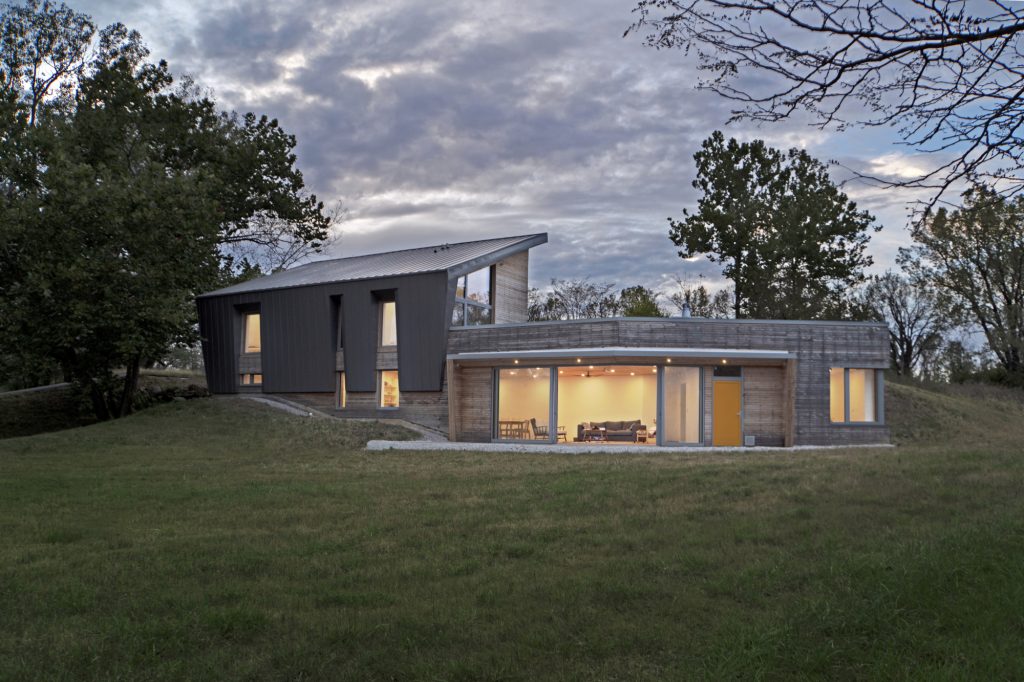Earlier this month I participated in a webinar titled Designing Highly-Sustainable Buildings featuring the Sketchup software team, along with Sefaira, a plugin that calculates various aspects of energy use pertaining to the design. A representative from an architectural firm that uses the software explained how they go about their designing, which is mostly for commercial projects.
It was immediately apparent to me that many of the designs did not appear to be inherently energy efficient, using vast walls of glass and reinforced concrete. The only way they were able to achieve “net zero energy use” was by slapping huge solar PV arrays on the roofs to cancel out the inefficiencies.
At a certain point, I posted a question, asking if they considered the embodied energy of the materials used in their calculations for net energy use. After the webinar I received an email directly from Peter Krebes, the founder of Sefaira, explaining that no, they do not consider embodied energy. He offered to phone me so he could explain their thinking about this.
So we set up a date to chat by phone. He described how his personal home was built largely underground, using insulated concrete forms, and that he expected it to last over 150 years. He claimed that because of the durability of the material and design choices, that the embodied energy of those materials was negligible in comparison. And he justified the net zero designation with the addition of PV arrays for electricity.
From my perspective, this is short sighted, because both longevity and embodied energy are important. We can no longer tolerate the use of energy intensive materials ignoring how the pollution they produce affects our Earthly environment.
 Peter suggested reviewing the building and performance of the Iowa Nest, his personal home, as it is presented at www.iowanest.com. There is much about the design and the energy efficiency that it has that I like. Still, less energy intensive materials could have been chosen.
Peter suggested reviewing the building and performance of the Iowa Nest, his personal home, as it is presented at www.iowanest.com. There is much about the design and the energy efficiency that it has that I like. Still, less energy intensive materials could have been chosen.

It is interesting to consider that if lasting structure requires an up-front added pollution level that contributes to climate change, the long term durability may not ever overcome the impact. If the load on the environment is up-front, the durability may not be achieved as an added benefit for some structures. There is also not a complete guarantee that concrete will not crack at some point due to unforeseeable events, so durability isn’t really a fixed numerical value.
Thanks for the continued content, Kelly.
SEE EVERYTHING AS AN OPPORTUNITY
As this topic begins to receive more attention in green building circles, there is the likelihood embodied carbon of materials could be included into this or SketchUp software as a Plug-In.
Anyone know a Computer Science coder looking for a thesis project?
SketchUp plugins are written in, “Ruby,” coding language.
Wanted to mention in addition that the above looks like a beautiful design, and the attention to reduced energy use is very well thought out. Concrete use, an energy intensive material to produce, obviously has real advantages, like code approval, for one thing. It also has well-known and studied material properties, and is definitely durable even if not entirely invulnerable. A major structural failure would of course cause an entire mess of Embodied Energy and financial expenditures. Wish we could speed up processes for obtaining structural data on more natural building materials. Anybody hear about grant funds for this in the 2021 Infrastructure Bill?
Kelly,
I think this is a very brave and important stance you have taken with this post. I too was at the NBA in Moab and wished we had met. I presented on a couple of related topics. I am in the process of writing an article to be published in the coming months that will address similar misguidance in the design and build world and presents ideas for transparency and integrity. I would love to discuss this with you sometime. I really enjoy the service you provide with this blog and your own writing.
Many Thanks,
Cillian Liam Barrett